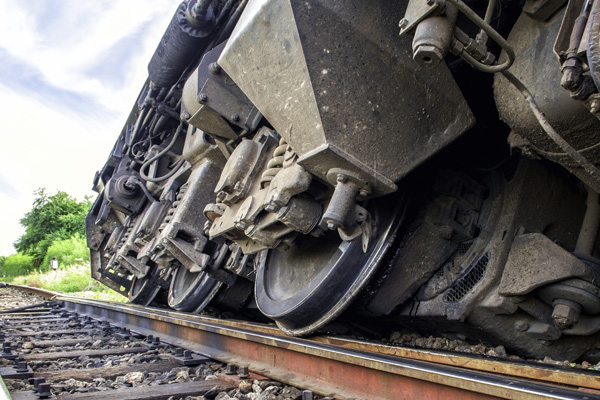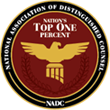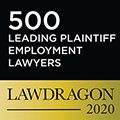San Francisco Train Accident Lawyer

 Injured in a Train Accident in San Francisco? Contact Rizio Lipinsky Heiting for Qualified Legal Representation
Injured in a Train Accident in San Francisco? Contact Rizio Lipinsky Heiting for Qualified Legal Representation
According to the Federal Railroad Administration, more than 5,000 train accidents occur in the U.S. every year. Such accidents kill approximately one person every 100 minutes, and every two weeks or so, a train carrying hazardous materials derails. These are just a few examples of the terrible toll that train accidents have on society – especially on unfortunate victims. If you have become one, it is crucial to seek the help of a qualified train accident attorney right away.
Information About Train Accidents
Due to the massive size and power of trains, accidents involving them tend to cause significant damage, including serious injuries and even death to victims. The most common types of train accidents include:
- Derailments – Train derailments cause the most widespread damage, and they most commonly happen when responsible parties fail to follow safety standards.
- Railroad Crossing Accidents – Many train accidents occur at railroad crossings. There are more than 209,000 crossings in the U.S., and more than 50 percent of such accidents occur at unprotected crossings. Worryingly, more than 80 percent of railroad crossings lack adequate warning devices.
- Collisions – Some train accidents happen when trails collide with other trains or with obstructions on train tracks.
- Non-Collisions – Other accidents may happen without collisions happening; in particular, pedestrians may fall from platforms and be crushed by trains.
How Do Train Accidents Happen?
One of the reasons that it’s so important to enlist the help of an experienced San Francisco train accident attorney like Rizio Lipinsky Heiting is because train accidents vary widely, and many things can cause them to happen. Some of the top causes of such accidents include:
- Operator error – Conductors and engineers are sometimes responsible for train accidents. They may be fatigued, overworked, or distracted. By law, for example, conductors are required to blare their horns if they see someone on the tracks; this doesn’t always happen.
- Defects – Defects on the tracks or roadbed, like potholes at railroad crossings, are sometimes to blame for these types of incidents. Faulty equipment, including damaged crossing arms, signals, and warning likes, are also common issues. When traffic control mechanisms fail, two trains may collide.
- Speed – By law, trains must follow speed limits to ensure safety. Unfortunately, they don’t always do so. In May 2015, for example, an Amtrak train near Philadelphia inexplicably accelerated from 70 mph to 105 mph while rounding a curve, causing a derailment. Eight people were killed, and more than 200 were injured.
- Outdated technology – By federal law, railroad operators are required to maintain all equipment and technology used in the operation of railroads and trains. However, railroad companies are not always diligent about doing so. For example, by the end of 2018 – the deadline imposed by the federal government — more than two-thirds of them had still failed to implement Positive Train Control, or PTC, systems.
- Obstructions on tracks – Vehicles and other equipment may block the tracks. If conductors fail to see them in time, serious accidents may occur. In April 2016, for example, two railroad workers operating a backhoe on the tracks were killed when they were struck by an Amtrak train.
Railroad Safety Laws
Many laws are on the books concerning the safe operation of railroads across the U.S. Unfortunately, they are often stacked in favor of operators rather than potential victims. Some examples of such laws include:
- Common Carrier Laws – Common carrier laws impose greater duties of care onto common carriers, including railroad companies. This means that they must act with a higher degree of care than defendants in other types of personal injury cases.
- FELA – The Federal Employers Liability Act, or FELA, is designed to protect federal employees. Railroad employees fall into this category. Because of this law, railroad operators are required to enforce safety regulations proactively; perform inspections; and offer a reasonably safe environment for employees. When they run afoul of this law, operators may owe benefits to injured workers or, in the case of workers who have been killed, to their survivors.
Types of Plaintiffs in Railroad Accident Cases
Victims, or plaintiffs, involved in train accident cases, commonly include passengers, bystanders, and railroad workers. Additionally, special considerations are imposed upon railroad operators to protect the safety of children who may live or play close to railroad tracks. For example, if a railroad fails to fix a broken fence in a timely manner, and a child is injured or killed, the company may be liable.
Types of Defendants in Train Accident Cases
Parties that are often held responsible in train accident cases include:
- railroad companies
- railroad employees
- government agencies
- equipment manufacturers
Types of Evidence Commonly Used in Train Accident Cases
Due to statutes of limitations imposed on train accident cases, it’s essential to act quickly when involved in such an incident. Many types of evidence may be available, and a skilled train accident lawyer will make sure to gather it all in a timely manner. Examples of the types of evidence that may be used include:
- Black Boxes – As with airplanes, trains often have black boxes that track metrics like speed, when brakes are applied, and so on.
- Train Signals – Many train signals store and transmit information regarding crossings to dispatch centers.
- Cell Phone Records – In the case of a distracted conductor, cell phone records may be subpoenaed and used by personal injury lawyers to prove that negligence occurred.
Injured in a Train Accident? Act Quickly to Protect Your Rights
Because so many variables and scenarios are possible with train accidents, it’s crucial to enlist the help of a qualified train accident lawyer as quickly as possible. In the Bay Area, Rizio Lipinsky Heiting is the law firm to trust for aggressive representation in train accident cases. Founded by two of California’s top trial attorneys, Rizio Lipinsky Heiting has recovered hundreds of millions of dollars for plaintiffs in personal injury cases through the years. Our firm boasts more than two decades of experience, and we act as allies, friends, and fearless advocates to victims of train accidents throughout the state.
If you have been injured — or a loved one has been killed — in a train accident in San Francisco, it’s crucial to seek compensation for pain and suffering; physical and psychological injuries; loss of income; and other losses right away, so contact the skilled train accident attorneys at Rizio Lipinsky Heiting today.



















